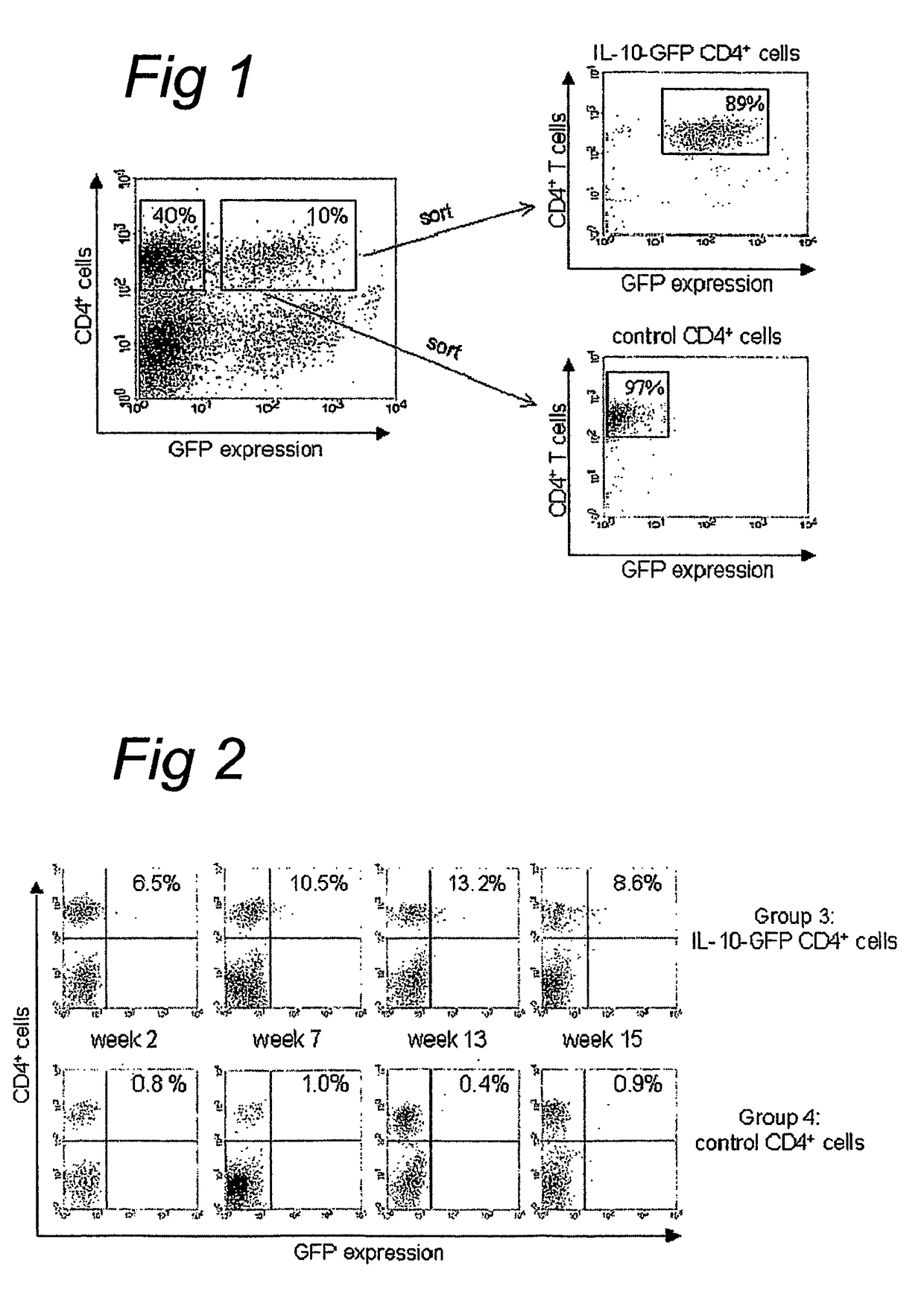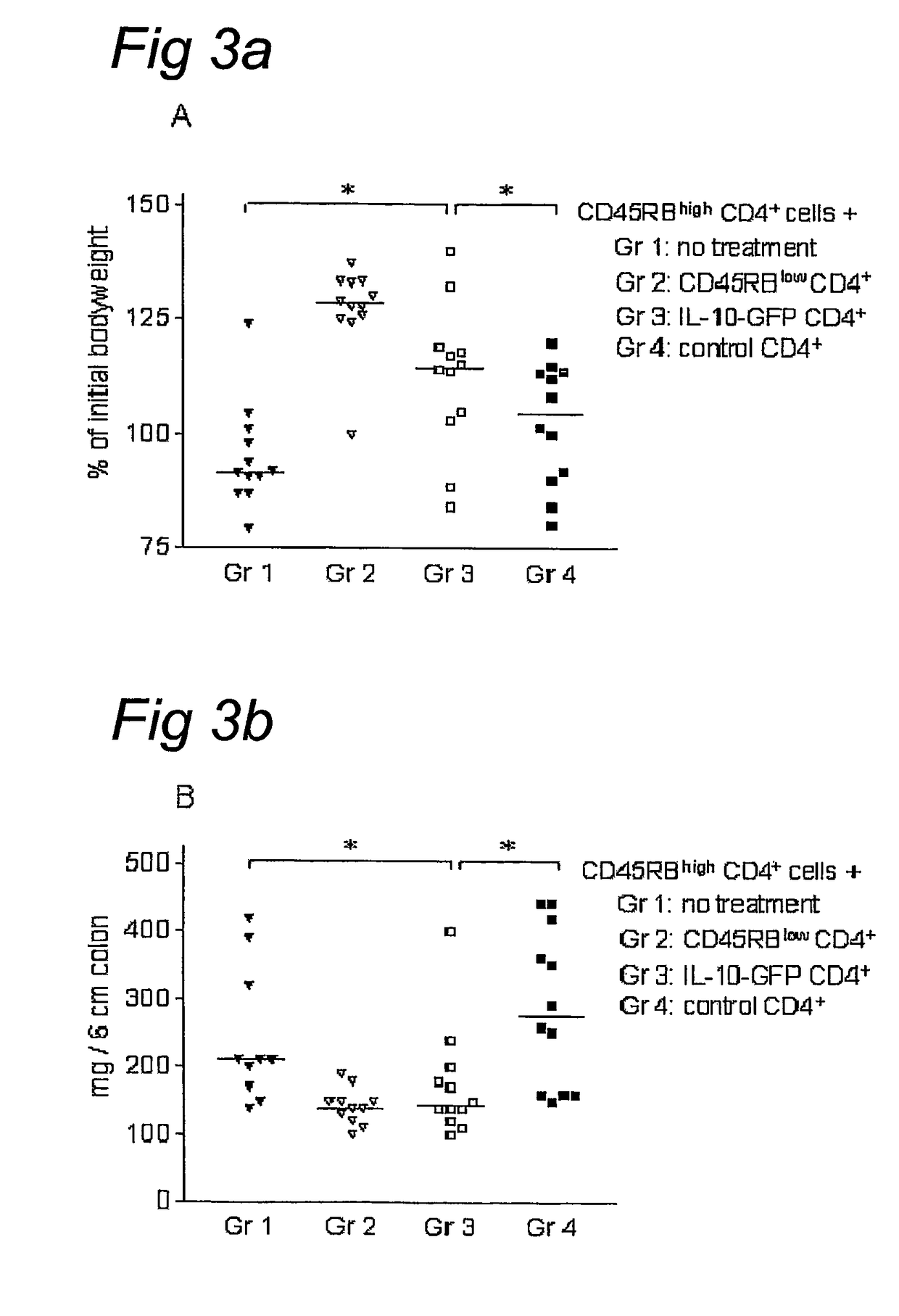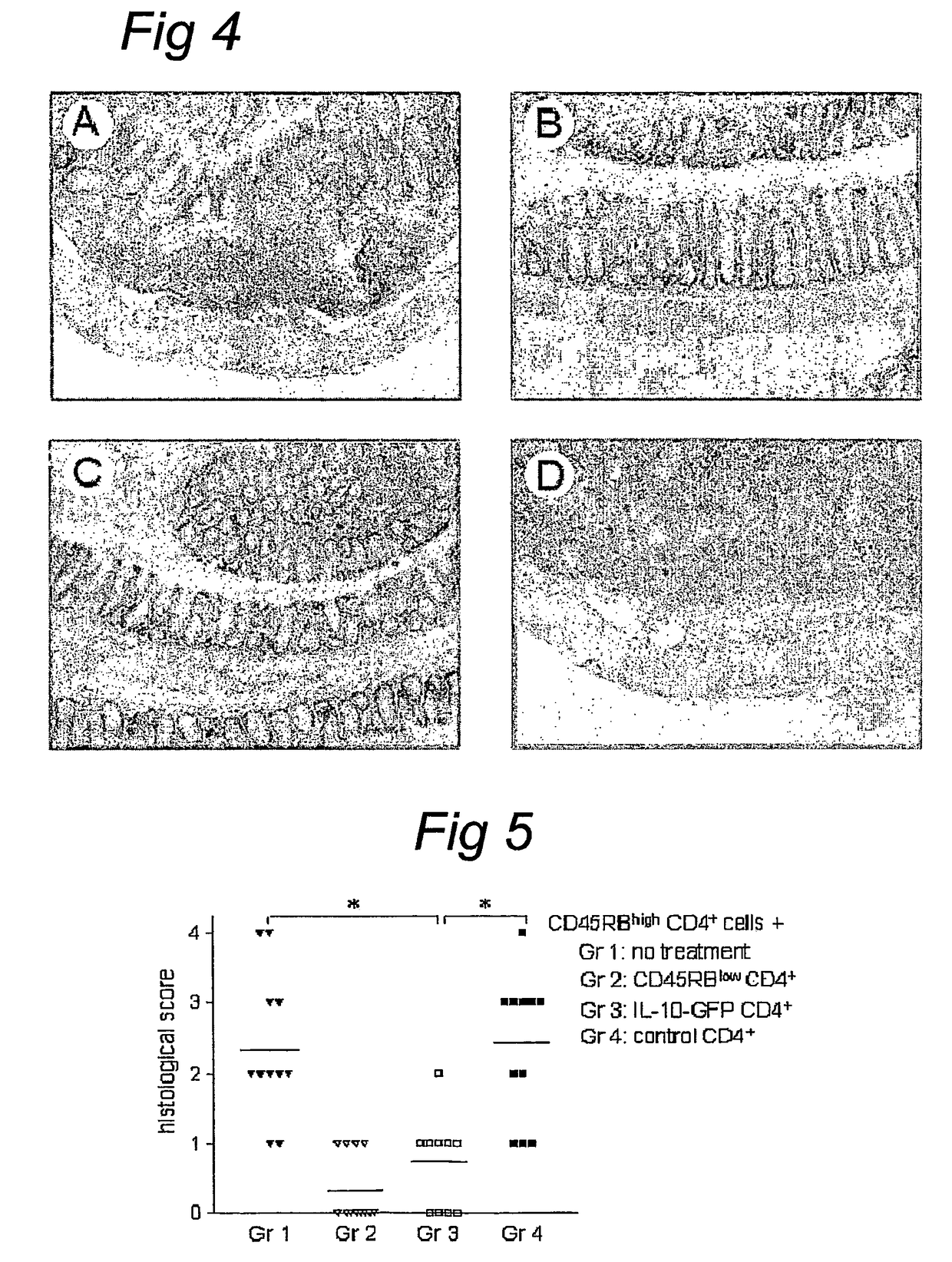IL-10 gene transfer to peripheral mononuclear cells
a technology of peripheral blood mononuclear cells and il-10, which is applied in the direction of genetically modified cells, biocide, peptides, etc., can solve the problems of inability to produce therapeutically effective quantities of regulatory t cells, limited use of il-10 transduced t cells, and inability to achieve antigen-specific application of il-10-expressing t cells. the current therapeutic value is not practical, and the effect of limiting the use of il-10
- Summary
- Abstract
- Description
- Claims
- Application Information
AI Technical Summary
Benefits of technology
Problems solved by technology
Method used
Image
Examples
example 1
Interleukin-10 Transduced T Lymphocytes Prevent Colitis in the SCID Mice Transfer Model
1.1 Materials and Methods
1.1.1 Mice
[0093]BALB / c and C.B.-17 SCID mice were purchased from Charles River (Charles River, Someren, the Netherlands) and maintained in filter-top cages under specific-pathogen free conditions at our animal care facility. All experiments were approved by the animal welfare committee. Mice were used at 7-10 weeks of age.
1.1.2 Production of Replication-Defective Retrovirus
[0094]The LZRSpBMN-IRES-GFP retroviral plasmid (referred to as GFP) was constructed as described previously.42 Briefly, GFP complementary DNA (cDNA) (Clontech, Palo Alto, Calif.) was cloned downstream of an internal ribosome entry site (IRES) in the LZRS retroviral vector (kindly provided by G. Nolan)43 and expressed from the retroviral long terminal repeat of the Moloney murine leukemia virus (MMLV). A 536-bp PCR fragment containing the human IL-10 cDNA44 was amplified from human cDNA with primers conta...
example 2
Retroviral Transduction of Human T Cells
2.1 Methods and Materials
2.1.1 Vectors and Viral Production
[0125]Vectors and viral production were as described in Example 1.1.1
2.1.2 Retroviral Transduction of Human T Cells
[0126]PBMCs were obtained from healthy adults after informed consent by Ficoll HyPaque (Pharmacia, Uppsala, Sweden) density gradient centrifugation. PBMCs (1×106 / well) were seeded in 24 well plates (Costar Europe Ltd, Badhoevedorp, The Netherlands) and cultured under standard conditions in Iscoves modified Dulbecco's medium (IMDM, Biowhittaker) supplemented with 10% human serum (Biowhittaker), 2 mM glutamine, and 1% antibiotic-antimycotic solution (GibcoBRL). Cells were stimulated with 1 μg / ml of phytohemagglutinin (PHA, Murex Diagnostics, Dartford, UK) and 10 U / ml of recombinant human IL-2 (Chiron, Amsterdam, The Netherlands) under standard conditions. After 48 hours, 5×106 cells were seeded in 6 well RetroNectin-coated plates (Retronectin; Takara, Otsu, Japan), and trans...
PUM
| Property | Measurement | Unit |
|---|---|---|
| time | aaaaa | aaaaa |
| ionic strength | aaaaa | aaaaa |
| temperature | aaaaa | aaaaa |
Abstract
Description
Claims
Application Information
 Login to View More
Login to View More - R&D
- Intellectual Property
- Life Sciences
- Materials
- Tech Scout
- Unparalleled Data Quality
- Higher Quality Content
- 60% Fewer Hallucinations
Browse by: Latest US Patents, China's latest patents, Technical Efficacy Thesaurus, Application Domain, Technology Topic, Popular Technical Reports.
© 2025 PatSnap. All rights reserved.Legal|Privacy policy|Modern Slavery Act Transparency Statement|Sitemap|About US| Contact US: help@patsnap.com



